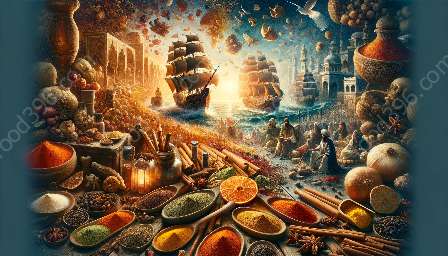The modern spice industry and trade patterns are an integral part of global commerce, with a rich history steeped in traditions and cultural significance. This article delves into the evolution of the spice trade, its impact on food culture and history, and the contemporary trends and patterns shaping the industry today.
History of Spices and Their Trade
The Spice Route: The history of spices dates back to ancient civilizations, where spices were highly prized commodities, often traded along the famous Spice Route that connected Asia, Africa, and Europe. This trade route played a pivotal role in shaping global trade patterns, cultural exchange, and the spread of culinary influences.
Explorers and Traders: The Age of Exploration saw European explorers like Vasco da Gama and Christopher Columbus seeking new trade routes to access coveted spices such as pepper, cinnamon, and cloves. This era marked a significant chapter in the history of spices and their trade, as it led to the establishment of colonial empires and the global diffusion of culinary traditions.
Colonial Influence: The colonization of spice-rich regions by European powers further transformed the spice trade, laying the foundation for the modern spice industry. Colonial powers established plantations and trade networks, introducing new varieties of spices to different parts of the world and consolidating their control over the global spice market.
Food Culture and History
Culinary Traditions: Spices have played a pivotal role in shaping the culinary landscape of various cultures throughout history. From the intricate spice blends of Indian cuisine to the aromatic herbs of Mediterranean dishes, spices have been revered for their ability to elevate flavors and create distinct regional culinary identities.
Cultural Significance: Spices have not only influenced the taste and aroma of dishes but have also been deeply intertwined with cultural rituals, traditions, and celebrations. Many spices hold symbolic significance in religious ceremonies, social gatherings, and festive events, further accentuating their importance in food culture and history.
Modern Spice Industry and Trade Patterns
Global Supply Chain: The modern spice industry operates within a complex global supply chain, with key producing regions including India, Indonesia, China, and Vietnam. These countries are significant players in the cultivation and export of spices, driving the trade patterns that define the industry today.
Market Trends: Innovations in transportation, packaging, and technology have revolutionized the spice industry, enabling spices to be sourced, processed, and distributed on a larger scale than ever before. Moreover, changing consumer preferences and growing demand for ethnic and gourmet cuisines have shaped the market trends, influencing the types and varieties of spices traded globally.
Sustainability and Quality: In recent years, the spice industry has witnessed a heightened focus on sustainability and quality assurance. With increasing awareness of ethical sourcing, fair trade practices, and organic certifications, consumers are demanding transparency and accountability from spice producers and suppliers. This shift has led to a greater emphasis on environmentally friendly practices and the preservation of traditional cultivation methods.

